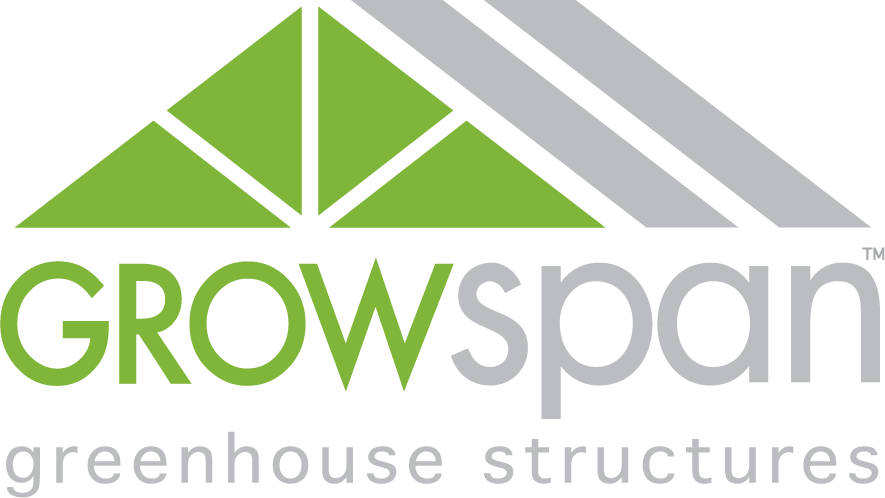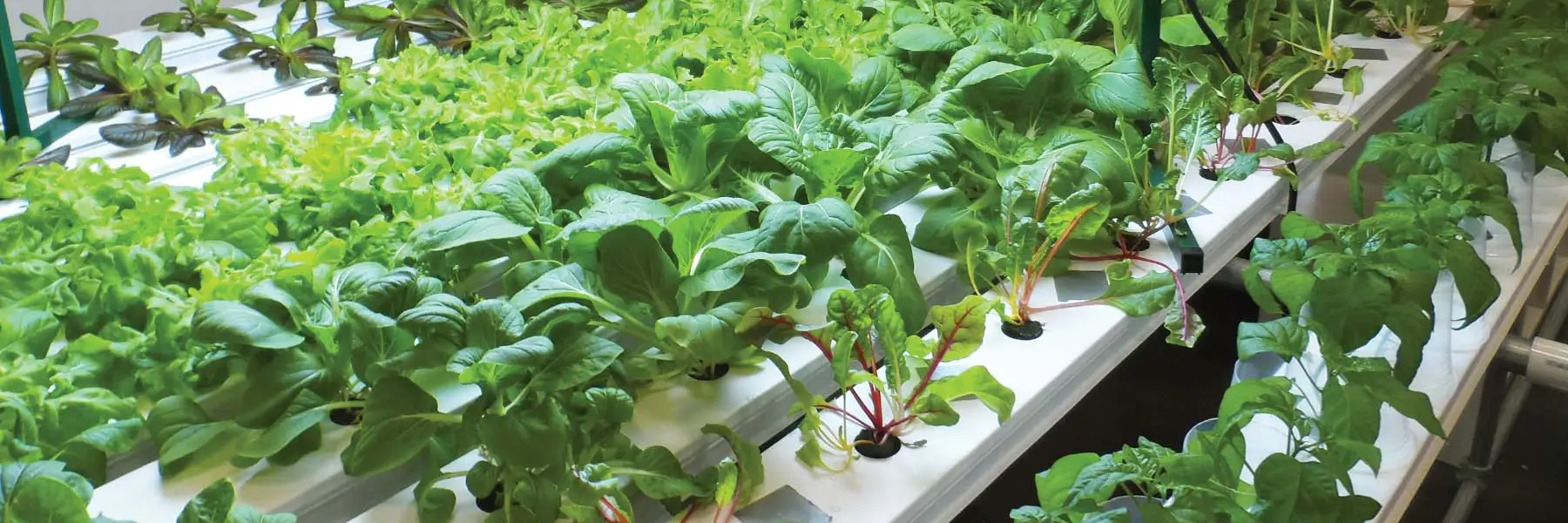Four Tips for Thriving in Hydroponics
May 18, 2018
Growing hydroponically carries several noteworthy benefits. Perhaps the most significant advantage is that hydroponic systems are energy-efficient, since they require less water, pesticides and soil. Growers who wish to produce crops year-round in an environmentally-conscious way would do well to consider a hydroponic system.
Growing requirements for hydroponically grown plants can vary depending on the type of plant being grown. However, delivering the proper type and amount of nutrition, water and ventilation helps all hydroponically grown crops thrive. Apply the following four guidelines in order to ensure the utmost efficiency and quality when running a hydroponic system.
Deliver the Right Nutrients, at the Right Time
When it comes to hydroponic nutrition, not all minerals are created equal. Macro nutrients are needed in large quantities and include nitrogen, phosphorus, potassium, calcium, magnesium and sulfur. Micro nutrients – iron, manganese, boron, zinc, copper, molybdenum and chlorine are needed too, but in very small amounts. Some plants may need more nitrogen one week and more phosphorus the next, so staying vigilant of each crop’s unique needs on a weekly basis is essential.
For hydroponic growers that are first starting out, it’s wise to use a professional hydroponic nutrient solution instead of mixing plant food at home. Some growers use nutrient additives when they’re eager to improve their results, but it’s best to stick with the three-part nutrients until the crops are doing well.
An EC (electrical conductivity) meter or a TDS (total dissolved solids) meter is critical to tracking the strength of a nutrient solution. With hard data about how plants are responding to nutrients, growers can make adjustments to the solution as necessary.
After two weeks have passed, the nutrient reservoir should be replenished with fresh water and fresh nutrients. Having two nutrient reservoirs – one designated for nutrient solution and the other filled with regular water for the next nutrient solution change, is a helpful way to maintain this practice. The reservoir containing regular water will get raised to room temperature and have time to de-chlorinate. Having room temperature, de-chlorinated water going into a hydroponic system is a good way to protect roots from potential damage.
In addition, be sure to keep nutrient solution between 65 and 70 degrees Fahrenheit to ensure proper absorption. If the nutrient solution is below 65 degrees, plants may not drink enough of the water. Warmer than 70 degree temperatures mean the nutrient solution will not hold as much dissolved oxygen.
Maintain Water Quality and Quantity
Water quality in hydroponics is even more crucial than it is in regular growing methods, since the grow media in hydroponics is stationary. This means that the pH of the water matches the pH of the growing media.
Lab analysis of incoming water for hydroponics systems is recommended on an annual basis, if not more frequently. Make sure there is a checklist for pH, EC, alkalinity, chlorine, sodium, key metals and macro and micronutrients. Once the results are obtained, growers can build the proper fertility program.
It’s important to continue monitoring the fertilizer and incoming water with a handheld meter, which tests the pH and EC levels. These meters are available in simple, effective pen and multi-function combo styles. Pen and combo meters should be used to test the incoming water and troubleshoot crop issues. In-line systems continually read pH and EC levels and warn growers when values fall out of their desired range.
Equally important as ensuring water quality is giving crops the appropriate amount of water. Overwatering will cause the roots to rot and underwatering will make the roots dry out. Achieving optimum hydration is a balancing act that requires growers to watch how the leaves of crops behave after waterings. If plants perk up, water more frequently. If plants wilt, water less frequently.
Get the Air Flowing
The importance of air movement cannot be overstated when it comes to hydroponics installations. Ventilation removes warm, carbon-dioxide-depleted air and funnels in fresh, cool air. Hydroponically produced plants need plenty of ventilation not only to thrive, but also to avoid foliar disease. Hydroponic crops absorb carbon dioxide pretty quickly, so it’s very important to have a steady supply of fresh air. Low carbon dioxide levels result in small yields and slow growth.
Insects have an easy time settling on plants in environments where the air is still. The simplest way to minimize the damage caused by insects is, once again, to have plenty of air circulation. Fixed or oscillating fans provide a continuous stream of air flow over the grow area, which makes it hard for insects to land and potentially wreak havoc on crops.
Different types of fans can create their own air circulation patterns, so growers should consider what kind of fan or fans would be ideal for their space. An HAF (horizontal airflow) fan effectively reduces temperature gradients and patches of stagnant, humid air. HAF fans are the standard way to ensure uniformity in both greenhouse and warehouse spaces. In small spaces, a few fans can be set up to create circular airflow. In bigger spaces, fans can be used to create more complex flow patterns.
Invest in a High-Quality System
Successful hydroponic production begins with a top-quality hydroponic system. HydroCycle is GrowSpan’s industry-leading, highly versatile hydroponic system that suits both beginner hobbyists and commercial pros alike.
The most popular growing method used by those in commercial hydroponics is NFT (nutrient film technique.) Crop roots are suspended in channels, allowing for high yields with greatly reduced water and nutrient waste. The NFT channels in a HydroCycle NFT System are NSF-certified and safe for food use. Additionally, the base is contoured in order to promote proper nutrient flow and maximum aeration. HydroCycle NFT channels come in numerous sizes and can accommodate differently sized crops, from lettuce to larger plant varieties like tomatoes or cannabis. Also useful are the snap-on, removable lids, which enable growers to reuse channels to grow multiple crops.
If growers are looking to grow very large crops, the wide, 9” channels of the HydroCycle Pro NFT Deep Systems are an ideal option. These large channels provide plenty of space for root mat development. For growers in need of a compact design, the Vertical NFT Lettuce System is an excellent space-saver. Channels are stacked on top of one another instead of being spread out, creating a condensed yet highly efficient overhead space.
Large crops with vines, such as tomatoes and cucumbers, do quite well in HydroCycle Dutch Buckets. These versatile systems function in essentially the same way as a drip irrigation system. They contain a siphon-designed drainage system and nutrient reservoir with dripper stakes to feed the plants. It’s easy to adjust the bucket spacing of plants, so growers have the freedom to grow a wide variety of crops. Dutch buckets are versatile enough to be used in both commercial and home settings. For growers already using Dutch buckets, HydroCycle’s Dutch Bucket row kit lets growers add more buckets to an existing system.
With stock and custom designs, GrowSpan has a dependable hydroponic system for every operation. HydroCycle hydroponic systems are constructed with built-to-last, galvanized steel frames and come complete with all the necessary hardware to get an operation up and running fast. With a number of styles to choose from, growers are guaranteed to find a system that will best compliment their needs.
To get project-specific hydroponics information, call or Request a Quote today.

